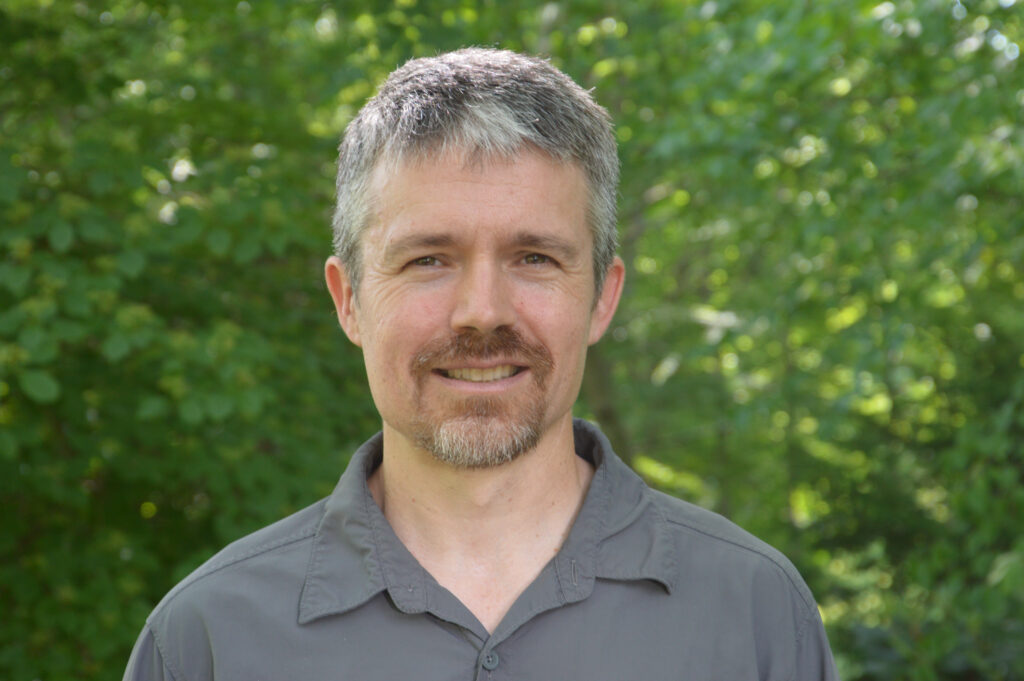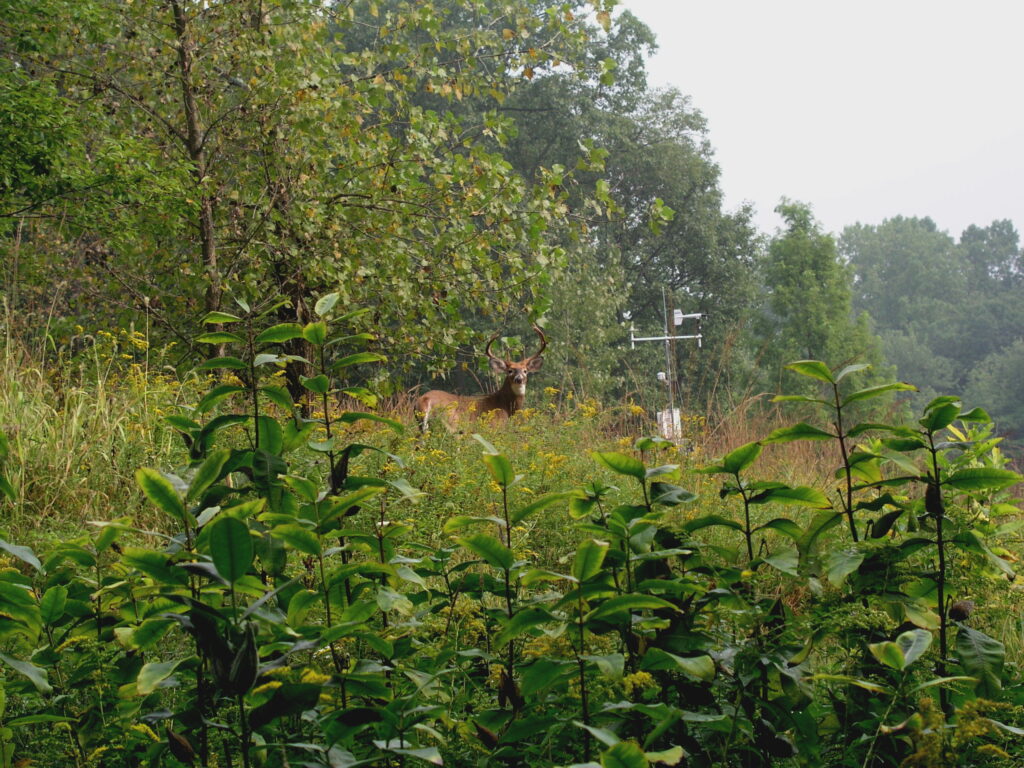Highstead would not be what it is today without the steadfast leadership and diverse experiences of its team members. Meet the people of Highstead: experts, conservation leaders, scientists, and staff that embody Highstead’s mission to build a healthier, more livable world for all in our staff interview series.

What is your role?
Ed: I am senior ecologist and have been Highstead’s ecologist since 2006. I conduct ecological research and monitoring studies in Highstead’s forest and more broadly across the region, in collaboration with partners. My focus is on deer-forest relationships, long-term forest change, and how land protection influences forest characteristics including carbon storage. I write popular and scientific articles on these topics, lead guided tours on natural history, and contribute scientific expertise to the Wildlands and Woodlands Initiative.
What drew you to Highstead?
Ed: I was finishing up a master’s degree at the Harvard Forest, and my advisor, David Foster, mentioned that he was board chair of a conservation organization in southwestern Connecticut that was looking to hire a field ecologist. We took a trip down to Highstead, and I found an organization that was unusually committed to field science, for a small non-profit, which is what I wanted to pursue. Highstead was also transitioning from being a local arboretum to becoming a regional conservation and ecology organization, so there was an opportunity to contribute significantly to the organization’s growth.

What are your favorite parts of your job?
Ed: I like writing and translating science for a general audience, and I enjoy helping people see a particular bird species for the first time or teaching people something new about trees or the landscape on a guided tour. I also get a thrill from observing an unexpected pattern in nature. And just being out in the woods on a beautiful day away from traffic and the built environment is pretty great.
Where does your motivation come from?
Ed: I think it comes from a deep respect for other life forms that my mother helped instill in me, a passion for untrammeled landscapes combined with a sadness that we didn’t protect more of them along the way, and a recognition of the incredible resilience of nature when left to endure and function on its own.
What is the professional accomplishment you are most proud of?
Ed: Early in my career, being awarded Harvard’s Bowdoin Prize for Graduate Essays in the Natural Sciences and publishing an article in the scientific journal Ecology in the same year is high on the list. I am also proud of the popular articles that I have written that aim to translate science to the general reader and to meld science with the humanities. And I take pride in a recent paper that I coauthored on wild forests as a natural climate solution that has reached a broad audience.
Who are your conservation heroes throughout history and today and why?
Ed: Certainly, Thoreau because he was so ahead of his time. In addition to advocating in the 1850s that each town set aside a wild preserve, he also advanced the idea of protecting land along rivers for the public to enjoy.
George Catlin for advancing the idea in 1841 of setting aside a vast section of the Great Plains, which was unfit for cultivation, as a “nation’s park” which would protect the magnificent but rapidly dwindling bison herds and the Native American tribes that called this land home. It never happened, to our great loss, but it was an idea for a preserve that celebrated both wildlife and native cultures, and predated the world’s first National Park (Yellowstone) by 30 years.
The State of New York for adding an amendment into their state constitution in 1894 to permanently protect over 700,000 acres of the Adirondack Forest Preserve as “forever wild”. Today the acreage has grown to over 2 million acres. It represents by far the most consequential act of forest preservation in the Northeast and paved the way for the Federal Wilderness Act many decades later.

What are some challenges you see facing the conservation and stewardship community in the next ten years?
Ed: I think embracing the idea that change is inevitable in our forests is a big challenge, particularly in the face of climate change and associated disturbances, and that change is not synonymous with “bad” even if it means our forests will endure more blowdowns, pest outbreaks, and the arrival of new species. Our forests may not look exactly the same as they did when we grew up, but if they are providing habitat, storing carbon, and regrowing after disturbances, then they are still functioning just fine.
Do you recommend any books, podcasts, or other resources that have had an impact on your life or work?
Ed: Books: Inheritors of the Earth by Chris Thomas; From Coastal Wilderness to Fruited Plain by Gordon Whitney; On Human Nature by EO Wilson; Guns, Germs, and Steel by Jared Diamond; Thinking Fast and Slow by Daniel Kahneman; and Wilderness and the American Mind by Roderick Nash. Podcasts: Revisionist History by Malcolm Gladwell
Where is your favorite place to recreate in the Northeast? What makes it special?
Ed: There are so many to choose from; it’s hard to pick just one. Certainly the beaches and salt ponds of Martha’s Vineyard hold a special place for me, as I grew up vacationing on the Vineyard with my family in a friend’s 600-square-foot cottage. Later I brought my own family to this cottage, so I developed quite a few memories over 45 years. Closer to home, I spend a lot of time running the forested trails along the Shepaug and Bantam Rivers in Washington, CT. Experiencing the beauty of rivers across the seasons never gets old.
What advice would you give to the next generation of conservationists?
Ed: Investigate conventional wisdoms. Question your own beliefs. Be careful not to conflate personal values with science. Be open to observing the unexpected in nature. Be skeptical of the idea that nature needs our help aside from being protected from development; nature is generally much more resilient than we think it is.